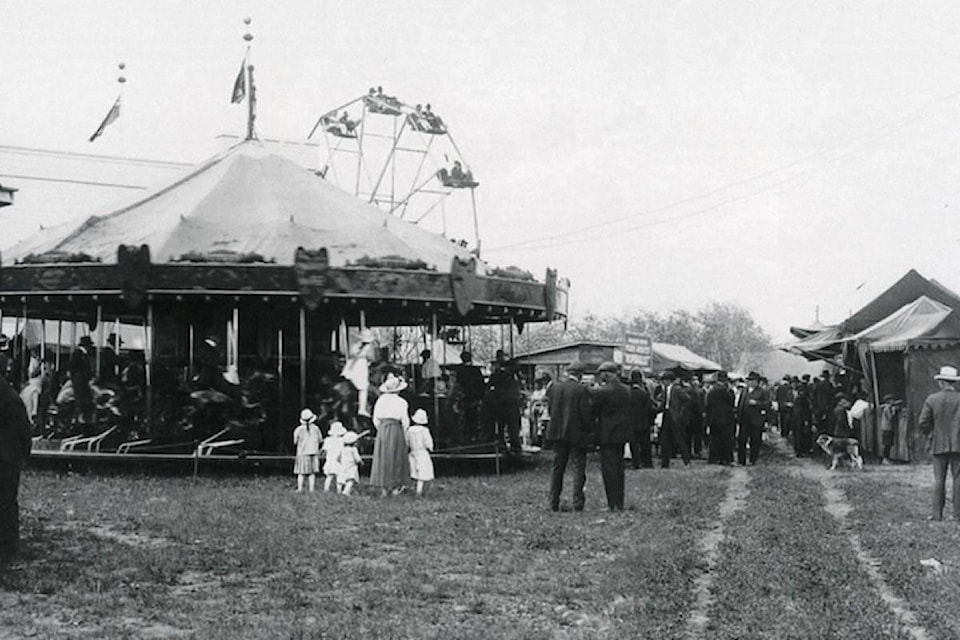Another Westerner Days Fair and Exposition is rapidly approaching.
However, this year’s grand event is very different from the Red Deer Fair that was held 100 years ago in July 1919 in the aftermath of the First World War.
The war had been a searing experience. Millions had lost their lives in the great conflict. A great many more suffered terrible injuries to their bodies and/or their minds.
Moreover, while many veterans had returned home, there were still some who had not made it back yet. Several of those still overseas were in military hospitals, waiting for their wounds to heal.
The economy was in poor shape. The end of the war brought the worst inflation in Canadian history, followed by a sharp recession. Unemployment was high. Local farmers were hit not only with low prices for their livestock and produce, but also by drought conditions that severely cut yields.
Despite the enormous challenges, the Red Deer Fair Board was determined to stage a memorable exhibition that would suitably celebrate the long-awaited return of peace.
Although money was tight, an ambitious program of improvements was undertaken. New hog pens, enlarged lavatories and five new refreshment booths were built. New electrical transformers were installed.
The officers’ quarters, left over from the time that the fairgrounds had been used as a military training camp, was converted into a poultry building. The racetrack was repaired.
However, just as these expensive improvements had commenced, new serious financial complications arose. The grants from the breeders’ associations were threatened when they learned that some exhibitors had not submitted adequate registration records.
The bank demanded personal guarantees by the directors on the fair society’s loans. The directors asked city council to indemnify them against any personal losses. The city councillors refused.
The fair society began a quest for new revenue sources. A 50-cent parking charge was implemented on the grounds. Requests for were made to rural municipal councils.
The directors decided to arrange for some special attractions to draw bigger crowds. Lt. George Gorman, a former air force pilot, was hired to perform aerial stunts and to provide Red Deer’s first airplane rides.
Veterans were persuaded to stage a mock battle with the assistance of Gorman’s bi-plane. An ambitious two-day program of horse racing was organized.
A large street parade was held on the first day of the fair to start the show off in grand style.
Brig.-Gen. MacDonald, the commanding officer of the 13 Military District, officially opened the fair, with the assistance of Red Deer’s former MLA and newly appointed senator, Edward Michener.
The Red Deer Community Band led the crowd in several stirring patriotic songs and military tunes.
Despite the concerns of some of the breeder associations, the stock shows were large (more than 1,700 entries) and were made up of quality livestock.
The midway was one of the best ever provided for the annual fair. The exhibit halls were full of displays of handicrafts, floral arrangements, early garden produce, baking, preserves and other domestic items.
There were also impressive displays of goods from most of Red Deer’s local merchants.
The closing ceremonies included the mayor presenting tokens of appreciation and remembrance to all the returned men.
Initially, silver or bronze medals were to be given. However, the city councillors decided that the expense was more than the city could afford. Certificates were printed up instead.
The fair board’s gambles paid off. The 1919 Victory Fair was a smashing success. The largest crowds ever swamped the fairgrounds.
A new ride on the midway, the Whip, “delighted the hearts and emptied the pockets of both young and old.”
Most importantly, the 1919 fair, instead of incurring a financial loss, made a profit of $1,000 more than had been made at the 1918 fair.
The directors no longer had to worry about digging into their personal savings to cover the cost of the fair.
The mood at the end of the festivities was so upbeat that people dismissed the annoyance of a large forest fire by Rocky Mountain House, which filled the air with smoke and caused large ashes to fall to the ground.
They claimed that the pall only served to “cut off the full glare of the hot July sun.”
Red Deer historian Michael Dawe’s column appears Wednesdays.
